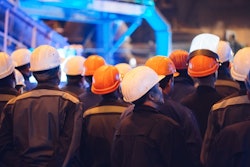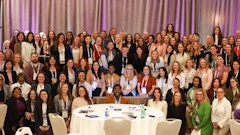
Today’s global business environment has become perpetually disruptive. Supply chain leaders, accustomed to navigating myriad ups and downs, now face a scenario where disorder is constant, overlapping and increasingly complex.
Disruption now comes from all directions and often without warning. Political instability can trigger sweeping shifts to trade, labor and tax policies. Regulatory changes, new tariffs and export controls can alter cost structures.
Geopolitical conflicts and civil unrest can bring the cross-border movement of goods and people to a crawl or even a dead stop. Economic volatility can usher in rapid currency swings impacting labor, procurement costs and pricing models. Natural disasters and technology-driven disruptions can cripple production hubs and infrastructure. While port closures, strikes, shipping bottlenecks, and freight capacity constraints can wreak further havoc.
Talent management sits squarely in the center of all these disruptions. The traditional approach – identifying a talent hub, optimizing cost structures, and scaling for growth – now carries far more uncertainty. Labor pools can dry up overnight and a single-source model for skilled labor may become a liability.
What worked 18 months ago can now expose an organization to operational, financial and reputational risks. This has elevated workforce strategy from an HR concern to a C-suite business continuity and resilience imperative.
Shifting from a focus on cost optimization to resilience
Historically, global workforce strategy has been driven by cost efficiency and talent availability. Today, resilience has emerged as a new and increasingly decisive factor. Yet according to PwC’s 2025 Digital Trends in Operations Survey, many operations leaders remain so focused on efficiency, cost and retention that only about one-third are actively prioritizing future-proofing or resilience. This lack of planning leaves organizations vulnerable to disruptions that can negatively impact their business.
Forward-thinking organizations are taking the necessary steps now to thread the resilience factor into their workforce planning.
Best practices to build a resilient global workforce strategy
Evolving static workforce planning to a more dynamic, intelligence-driven model requires a focus on four key practices:
Geopolitical risk monitoring. Leading organizations embed real-time political, economic and regulatory tracking into their workforce planning processes. Some tools and software platforms can deliver granular “stability maps” that highlight risk factors at both the national and sub-national level. This data can pinpoint critical geopolitical patterns:
- Is regulatory pressure building in certain industries?
- Are labor laws trending toward restriction or liberalization?
- Is infrastructure investment increasing or declining in key talent regions?
This intelligence should flow directly into decision-making to guide geographic workforce planning. It can also serve as an early warning system, prompting relocation or diversification before a crisis takes place.
Executive-level scenario planning. Scenario planning must move from an annual “what if” workshop to a continuous, executive-driven process.
This requires building a framework that models political, economic and infrastructure risks not as isolated threats, but as interconnected forces that can compound one another. The goal of this modelling is to stress-test the most critical roles and teams against realistic, high-impact scenarios, such as:
- Sanctions that sever access to local banking systems
- New trade barriers that delay product movement and create customer service bottlenecks
- Cyberattacks that take down an entire regional network
- Political unrest that necessitates evacuation of staff
By modeling multiple, simultaneous disruptions, executives can identify resilient workforce structures that remain viable even under extreme sets of circumstances. This also helps justify investment in “redundant” capacity that might otherwise be viewed as unnecessary.
Diversified talent locations. Relying on a single talent hub is increasingly risky. Organizations that are purposeful in spreading their workforce across multiple regions with different geopolitical, regulatory and economic profiles are more apt to enjoy built-in resiliency that protects operations against localized disruptions
This requires an on-the-ground assessment of each potential location, looking beyond cost to evaluate:
- Infrastructure quality (i.e. power, broadband, transportation, business continuity, etc.)
- Local governance and regulatory predictability
- Labor market depth for specific roles
- Cultural alignment with the organization’s operating style
Working with global talent management and outsourcing partners can accelerate decision-making and de-risk the process while ensuring new hubs aren’t just viable on paper but resilient in practice.
Continuity clusters. Another strategy for operational resilience is creating mirrored capacity across multiple sites or “continuity clusters.”
These clusters share the same processes, IT systems and security protocols, enabling rapid failover if one site is compromised. Companies can also leverage these clusters for “follow the sun” operations, where work is handed off across time zones for 24-hour productivity cycles.
This has multiple benefits: safeguarding continuity and improving speed-to-market, customer responsiveness and internal collaboration.
A call to action for supply chain leaders
In a supply chain environment where disruption is now default, workforce strategy must be approached with the same rigor as sourcing, logistics and production planning. This means making risk monitoring a daily discipline rather than an annual review, stress-testing critical roles and teams as rigorously as facilities and suppliers, diversifying talent locations with purpose and real-world intelligence, and building mirrored capacity to ensure operations continue when – not if – disruption occurs.
Enterprises that heed this call to action will be better equipped to adapt, recover and even capitalize on change. Business resilience is crucial and there is little room for missteps; by partnering with experienced workforce transformation experts, companies can benefit from the guidance and playbooks needed to do it right.


















